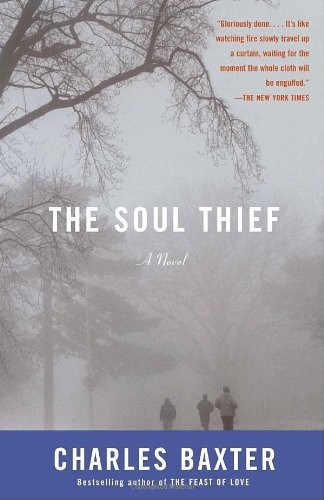
The Soul Thief
A Novel
کتاب های مرتبط
- اطلاعات
- نقد و بررسی
- دیدگاه کاربران
نقد و بررسی

November 5, 2007
The author of the National Book Award–nominated The Feast of Love
, Baxter returns with this ninth book, an assay into the limits of character, fictional and otherwise. The first half of the novel follows the brief arc of Nathaniel Mason's graduate career in 1970s Buffalo, N.Y., which centers on his friendship with the sexy but self-dramatizing Teresa (“which she pronounces Teraysa
, as if she were Frenchâ€) and her lover Jerome Coolberg, “a virtuoso of cast-off ideas.†Coolberg, obsessed with Nathaniel, begins taking his shirts and notebooks, and claiming that episodes from Nathaniel's life happened to him. Coolberg drops a hint that something bad will happen to Jamie, Nathaniel's sometime lover; when it actually comes to pass, Nathaniel's world begins to collapse. In the novel's second half, decades after these events have occurred, Coolberg enters Nathaniel's life again for a final, dramatic confrontation. Baxter has a great, registering eye for the real pleasures and attritions of life, but the book gets hung up on metafictional questions of identity (the major one: who is writing this first-person narrative?). The results cheat readers out of identifying with any of the characters, perhaps intentionally.

January 15, 2008
Nathaniel Mason is a graduate student in early 1970s Buffalo. At a beer party one autumn night, he meets the mysterious Jerome Coolberg, "a virtuoso of cast-off ideas." Coolberg quickly becomes obsessed with Mason, going so far as to steal his notebooks, his clothes, his girlfriend, and, finally, his memories and identity. But what exactly is Mason's identity? In Baxter's ("The Feast of Love") view, everyone in Buffalo's student ghetto is a poseur, trying on different identities as though they were a change of clothes. Several decades on, in the book's second half, Mason is living a colorless existence in the Midwest, while Coolberg has transformed himself into a National Public Radio star who encourages people to narrate personal stories on the air. In a surprise ending, we learn that Coolberg played a much bigger role in Mason's life than we'd originally been led to believe. Though the novel's menacing academic setting recalls Donna Tartt's brainy thriller, "The Secret History", this is basically a lightweight doppelgnger tale infused with 1970s nostalgia. The real fun comes in decoding Baxter's cultural allusions. For larger fiction collections. [See Prepub Alert, "LJ" 10/15/07.]Edward B. St. John, Loyola Law Sch. Lib., Los Angeles
Copyright 2008 Library Journal, LLC Used with permission.

Starred review from December 15, 2007
Where does our essence reside? In our bodies, our belongings, our memories? Do we own our lives? In each of his glimmering novels, Baxter explores the plexus between the dazzle of language and shadowy life. Baxter infuses placehere the shabbiness of 1970s Buffalo and the feral ambition of present-day L.A.with the voltage of desire while dramatizing the magnetic pull of obsession and loneliness. When we first meet Nathaniel, he is a brooding college student happiest among scruffy outcasts. Sensitive and self-defeating, he makes a cup of coffee for the junkie who breaks into his apartment, falls in love with a lesbian, and doesnt know how to handle Jerome Coolberg, the mad semigenius who seems to be co-opting Nathaniels life. Baxters novel is, by turns, poetically melancholy, a touch surreal, and wistfully hilarious. The cosmic haplessness of his passive antihero is enchanting, and Baxters riffs on the nature of the soul and the metaphysical aspects of a truly diabolical form of identity theft are profoundly unsettling. Threading his bluesy magic with traces of Calvino, Gertrude Stein, and Auster, Baxter creates a ravishing twilight tale of breakups and breakdowns, stories pilfered and reclaimed, souls stolen and liberated.(Reprinted with permission of Booklist, copyright 2007, American Library Association.)

























دیدگاه کاربران